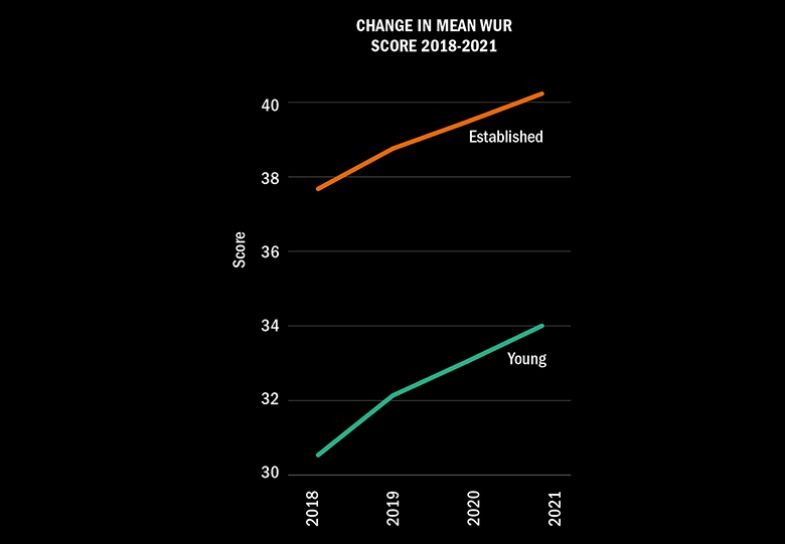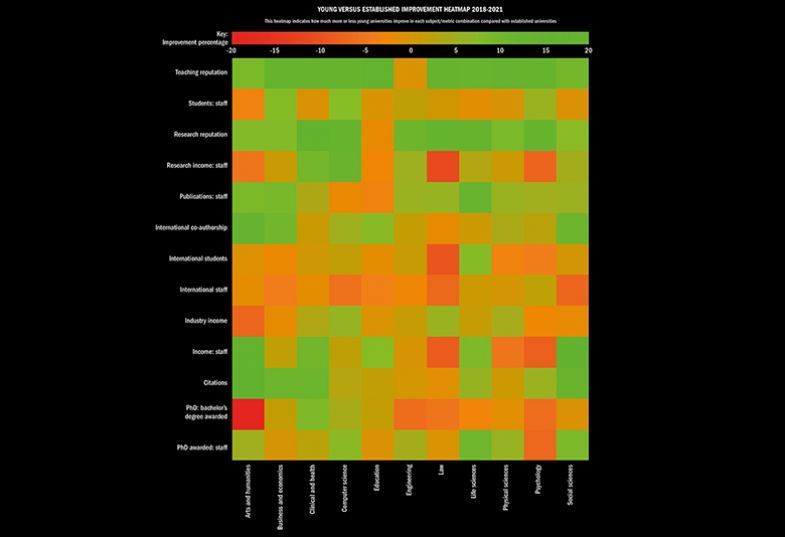It is often thought that young universities have the ability to be more nimble in their approach to higher education and research, so even if their performance initially lags behind their more established counterparts, they can quickly catch up.
But although this might seem like a plausible argument on the surface, do the results from the past few years of the World University Rankings suggest that this is indeed the direction of travel?
Looking at the change in average scores from the 2018 to 2021 editions of the ranking, those universities in the “young” category (aged 50 years and under) do seem to be improving more rapidly than older institutions.

Across most of the 13 metrics that make up the ranking, they have seen their average score increase, and in some areas at a noticeably more rapid rate than established universities.
This is largely in the area of reputation – an area where they might stand to gain the most – but there also seems to be a speedier improvement in areas that feed this perception in the eyes of the academic community, such as research impact and productivity.
Download a free copy of the Young University Rankings 2021 digital supplement
Digging into similar improvement data by subject suggests that health and life sciences are reaping some of the biggest rewards for younger institutions, whereas the two sets of universities are more evenly matched in their recent performance in physical sciences and engineering.
Metric and subject improvements 2018-2021

The heat map, meanwhile, provides an intersection between both these aspects to pinpoint exactly where young universities are making their gains, with research and teaching reputation scores rising most rapidly in areas including computer science and law.
Young versus established improvement heat map 2018-2021
Note: this heat map indicates how much more or less young universities improve in each subject/metric combination compared with established universities
Click image to view larger version
However, one note of caution for these institutions is that established universities are, on average, improving faster in terms of the income they attract. Given the financial pressures brought by the Covid-19 pandemic, this raises questions about whether young institutions can continue to bridge the gap on overall score that still exists.
Register to continue
Why register?
- Registration is free and only takes a moment
- Once registered, you can read 3 articles a month
- Sign up for our newsletter
Subscribe
Or subscribe for unlimited access to:
- Unlimited access to news, views, insights & reviews
- Digital editions
- Digital access to THE’s university and college rankings analysis
Already registered or a current subscriber? Login









